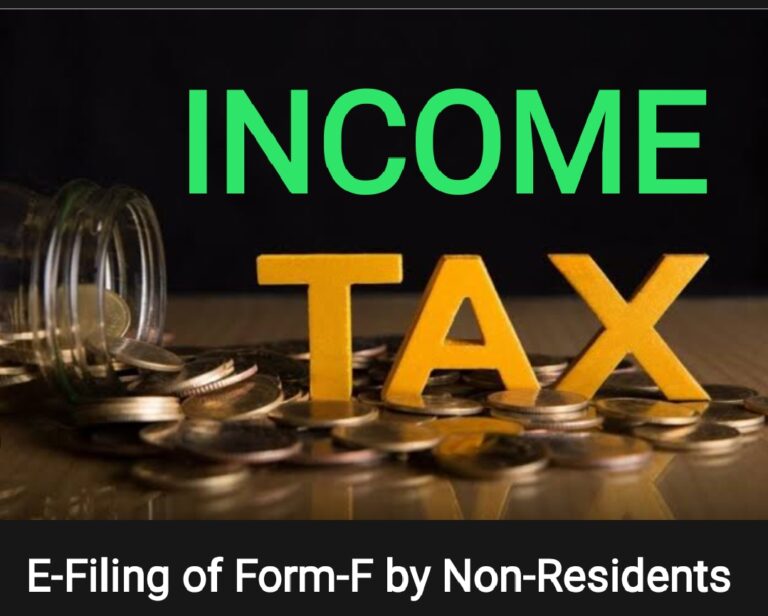E-filing of form-10F by NRIs Possible without PAN
In a significant development, non-resident individuals or entities without a Permanent Account Number (PAN) can now conveniently e-file Form 10F, which is required with a “tax residency certificate” to avail of tax treaty benefits. The Central Board of Direct Taxes (CBDT) has introduced a user-friendly process on the income tax portal, allowing non-residents to e-file Form 10F without the prerequisite of obtaining a PAN.
Under this new initiative, a dedicated option labeled ‘Non-Residents not holding and not required to have PAN’ has been integrated into the income tax portal’s registration tab. Although no official notification has been issued regarding this, interested users can proceed with registration by utilizing a one-time password. During the registration process, users are required to furnish their personal details as well as information about key individuals in India.
 This relaxation in the registration process coincides with the recent mandate, effective from October 1, necessitating the online filing of Form 10F. Originally scheduled to be mandatory from July 2022, the CBDT had deferred the implementation to April 1, 2023, for non-residents without PAN and not obligated to acquire one due to practical challenges in obtaining an online Form 10F in the absence of a PAN. This requirement was further extended to September 30, 2023.
This relaxation in the registration process coincides with the recent mandate, effective from October 1, necessitating the online filing of Form 10F. Originally scheduled to be mandatory from July 2022, the CBDT had deferred the implementation to April 1, 2023, for non-residents without PAN and not obligated to acquire one due to practical challenges in obtaining an online Form 10F in the absence of a PAN. This requirement was further extended to September 30, 2023.
Form 10F serves as a self-declaration that non-resident taxpayers must submit, along with their Tax Residency Certificate. This combination allows non-residents to receive relief on Tax Deducted at Source (TDS) for income generated in India. According to the Income Tax Act, non-resident individuals or entities cannot claim the benefits of a tax treaty unless they furnish a valid tax residency certificate from their respective country of residence. In cases where the tax residency certificate lacks essential details, the non-resident is required to provide a manual Form 10F.
This streamlined e-filing process not only simplifies compliance for non-residents but also ensures seamless access to tax treaty benefits, further encouraging foreign investment and financial transactions in India.
Steps of Registration
 Visit the E-Filing Portal: Navigate to the e-filing portal by following this link: Income Tax E-Filing Portal. Click on the ‘Register’ option.
Visit the E-Filing Portal: Navigate to the e-filing portal by following this link: Income Tax E-Filing Portal. Click on the ‘Register’ option.- Choose Registration Category: Select ‘Non-Residents not having a PAN and not required to have a PAN’ under the ‘Others’ category.
- Enter Basic Details: Fill in fundamental information such as name, date of incorporation, tax identification number, status, and country of residence.
- Provide Key Person Details: Input details of a key person, including their name, date of birth, and other necessary particulars.
- Submit Contact Information: Supply contact details, including email address and mobile number, which will be verified through a one-time password (OTP).
- Upload Mandatory Documents: Upload essential documents such as Tax Residency Certificate (TRC), address proof, identification proof, and any other required documents.
 Key Considerations
Key Considerations
- Mobile Number for OTP: Currently, the income tax portal may not deliver OTPs to foreign mobile numbers. Non-residents should be prepared to provide an Indian mobile number for registration and verification purposes.
- Mandatory Document Submission: It’s crucial to furnish mandatory documents during the registration process to complete the profile setup accurately.
- PAN Requirement Clarification: Non-residents opting for this registration must ensure they meet the criteria of not requiring a PAN in India as per the provisions of the Income-tax Act, 1961.
- Digital Signature Requirement: For filing Form 10F, non-residents need to digitally sign the form using a Digital Signature Certificate (DSC). The authorized person for the non-resident must obtain a DSC in India for this purpose.
Conclusion
This recent change in the income tax portal represents a positive shift towards reducing administrative burdens for non-resident entities dealing with Indian transactions while seeking tax treaty benefits. However, it’s important to note and address certain challenges, such as the requirement for an Indian mobile number and the necessity of obtaining a Digital Signature Certificate for form submission. The evolving landscape of tax compliance for non-residents in India is an area to watch, as the tax department may introduce further relaxations and solutions to enhance ease of tax compliance for non-residents. Stay tuned for updates and a user manual/guideline tailored to this specific registration category.
Link to access the CBDT Notification allowing manual e-filing of form-F up-to 31 March 2023: https://incometaxindia.gov.in/communications/notification/notification-e-filing.pdf
You Might Also Like: https://anptaxcorp.com/cbdt-special-campaign-3-0-is-in-full-swing/
CBDT Notifies Income Tax (22nd Amendment) Rules 2023: Rule 14A & 14B
